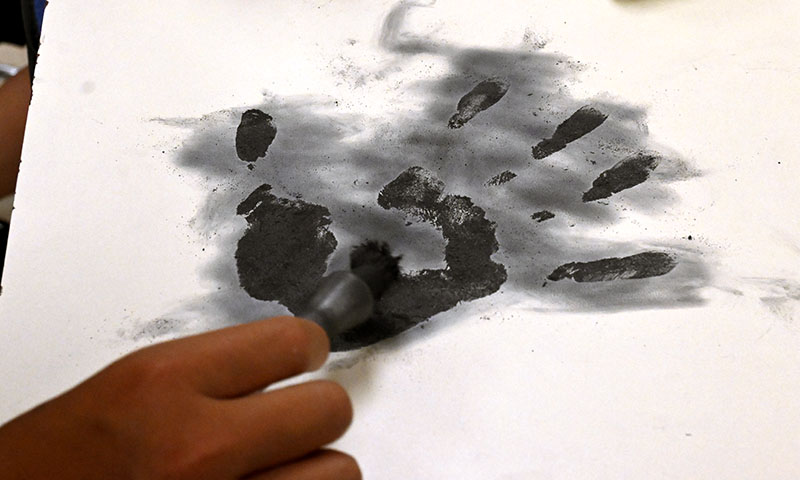Forensic Detectives
Intro to conventional forensic science

Forensic Detectives is offered in-person at all DNALC locationsas well as virtually on-demand.
In-Person Forensic Detectives
With the popularity of shows such as Crime Scene Investigation (CSI) the true nature of forensic science is often glamorized. As a result, TV viewers don’t have a true understanding of the field. Although DNA fingerprinting is a useful technique for forensic scientists, it certainly isn’t the only method used to solve crimes! Through a series of forensic labs and activities, participants will experience forensics in a more realistic fashion than conveyed during prime time. Participants will:
- use techniques employed by CSI experts to analyze a "crime scene" and collect evidence such as fibers, fingerprints, footprints, hair, and blood;
- explore areas of forensic science including pathology, entomology, and forensic profiling;
- investigate the science behind evidence like fingerprints and blood spatter;
- perform a real DNA analysis and interpret the results; and
- learn about different techniques used for DNA analysis and discuss the pros and cons of this type of evidence.
Details:
- Grades: entering grades 9–10
- $600 per student
- Monday to Thursday 9:30 a.m.–2:30 p.m., Parent Day Friday, 11:30 a.m.–1:00 pm in CSH and 9:30 a.m.–11:00 a.m. in NYC, Sleepy Hollow, and NJ
- June 30–July 4 week camp is Monday–Thursday due to the Independence Day holiday. Parent Participation Day will be Thursday afternoon with no class Friday.
- Available at:
On-Demand Forensic Detectives
With the popularity of shows such as Crime Scene Investigation (CSI), the true nature of forensic science is often misconstrued. Although DNA fingerprinting is a useful technique for forensic scientists, it certainly isn’t the only method used to solve crimes! Through a series of at-home forensic labs and activities, participants will experience forensics in a more realistic fashion than conveyed during prime time. Campers will:
- use techniques employed by experts to analyze a "crime scene" and process evidence;
- examine fingerprint minutiae and microscopic hair and fiber samples;
- perform a mock blood spatter analysis; and
- observe how to conduct a DNA analysis and learn how to interpret gel electrophoresis results.


